The World Reimagined: Part One
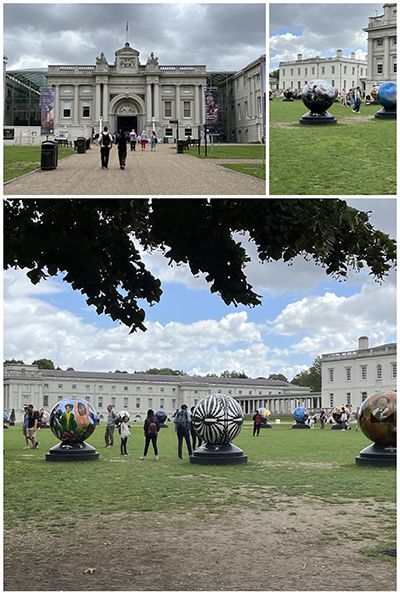
One of the best experiences I had when visiting Greenwich this year in the south east of the centre of London (down the Thames) was to see the The World Reimagined at the National Maritime Museum.
The World Reimagined created 103 unique globes across the UK exploring the history, legacy and future of the Transatlantic Trade in Enslaved Africans through the work of incredible artists.1
I was fortunate to see the 36 globes on exhibit outside the National Maritime Museum, Greenwich as shown above.
The globes, each created by a different artist, are grouped into the themes of: Mother Africa, The Reality of Being Enslaved, Stolen Legacy: The Rebirth of a Nation, Abolition & Emancipation, A Complex Triangle, Echoes in the Present, Still We Rise, Expanding Soul, Reimagine the Future and Community.
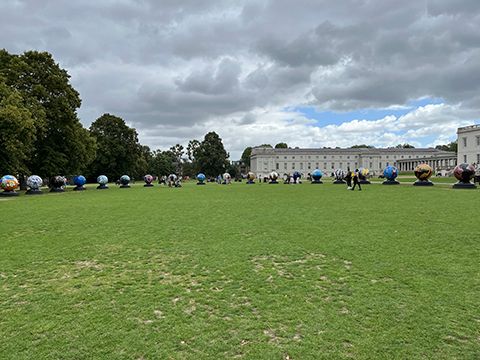
The World Reimagined aims to transform how we understand the transatlantic slave trade and its impact on all of us, in order to make racial justice a reality.2
A series of giant globes, each adorned with a unique artwork, are laid out across the lawns of the National Maritime Museum. From internationally recognised artists including Yinka Shonibare and Vashti Harrison to a host of emerging talents, together the works aim to "explore the world as it is and the world as it could be".2
I am going to show you a few of the globes I saw and studied and give you the artist's statement which accompanied their globe. As these statements are sometimes quite long I am going to show you the globes over a series of a few days.
The first globe I saw and studied was Hold the Line from the theme of Echoes in the Present created by Larry Amponsah.
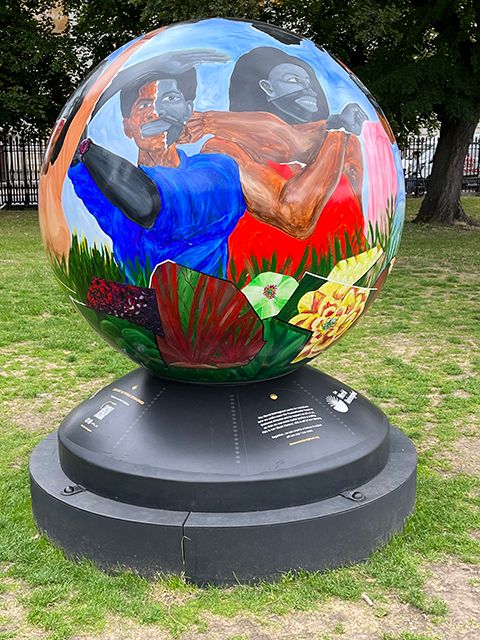
Artist's Statement: Larry Amponsah
The fight for freedom, equality and justice is the longest, most demanding, draining and dangerous of global wars to have ever been fought, and yet again, the most necessary battle for Black peoples. We can only afford to advance (for we have a lot at stake) and therefore to retreat or surrender is out of the question, for there is a cause! Sometimes, due to the brutal injustices we continue to experience as a people, we tend to forget or undermine the tremendous progress we have achieved as a minority group subjected to centuries of suppression.1
Hold The Line is a work made to remind every descendant of the enslaved, the suppressed, the colonised and our allies of the deadly battles we have fought in this war, how long it has taken for us to get here – and the need to defend what we have attained so far. It also clarifies our responsibility to push for the best for the following generations by uniting more than ever today, in order to pave more ways for further progress. It also encourages openness, peace and love; keeping our hope for a utopian future alive.1
A future in which difference is considered the key ingredient which holds and strengthens us together, rather than a tool for division. There’s no going back – we must take our place and own the space. We must tilt the ground and build things up. For out of the knowledge of holding a stake in a country, hope emerges. And with hope, we can build a better future that is diverse and inclusive, fair and just for everyone.1
I believe the fight for racial harmony and equality is the one fight every person alive today must be concerned with, as we will truly do well as a people when every one of us does well. Therefore let’s not stop hoping for that utopian world we imagined from the start – our lives depend on it and no matter what happens we must always remember to hold the line!1
The next globe titled Women of Westminister is by Shannon Bono and her globe relates to the theme of Community.
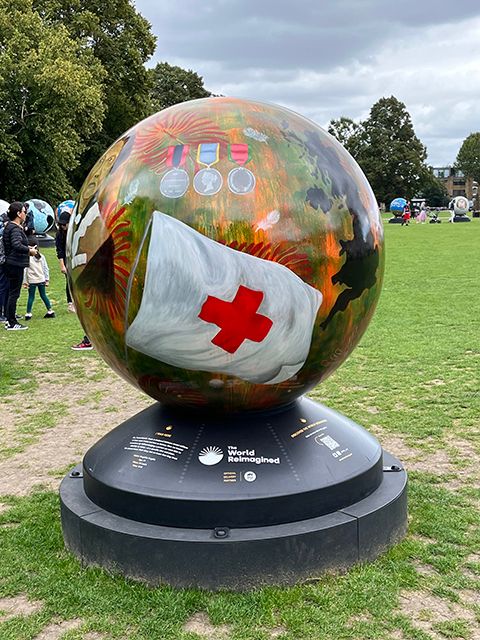
Artist's Statement: Shannon Bono
My paintings embody an afro-fem-centrist consciousness, sharing muted narratives and projecting Black women’s lived experience. I am invested in producing layered, figurative, compositions embedded with symbols and scientific metaphors that centralise Black womanhood as a source of knowledge and understanding.1
Enamoured by African spirituality, Christian iconography and renaissance art, I employ its purpose of cultural impact, liturgy and instruction for an improved society within my works. I explore the internal body as well as the external, by merging the design of notable fabrics from Africa with biological structures and chemical processes in living organisms for the backgrounds of my works and using the anatomy as a second canvas in the foreground.1
My globe design presents the faces of the women of Westminster Amy Ashwood Garvey and Mary Seacole, both women have plaques in the community but I feel it is important we represent them and put faces to their names. These women led lives dedicated to the service of others and have impacted history with their work.1
The Dear Archives globe created by Glory Samjolly represents the theme: Still We Rise...
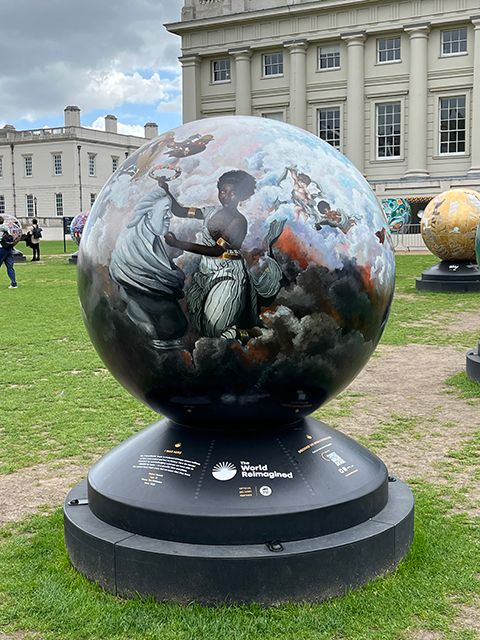
Artist's Statement: Glory Samjolly
Dear Archives is a globe installation which gathers my mental montage on unpopular but renown historical figures. Growing up, I vividly remember Roots, Twelve Years A Slave and The Color Purple being audacious portrayals of the horrors of African slavery or racial injustice. It felt like either we don’t go far back enough, or we don’t see history holistically.1
Still We Rise is a theme that honours victors, not victims. By this, I mean African, Black westerners who were met with prejudice and used the opportunity to overcome, and not remain victims, by being proactive not reactive.1
James Forten innovated the original sail, owning a sail loft business worth millions circa 1800. He was friends with Paul Cuffee, a sea captain who built the first racially integrated school in Massachusetts.1
Septimius Severus, an African Roman Emperor came to Britain in the second century to strengthen Hadrian’s wall.1
Black Aristocratic Art is a blog I created to honour the side of art history which is often overlooked, or simply unknown. It is important for Black communities in the West to acknowledge African individuals who pioneered in their spheres of influence.1
"For too long, the history of the Transatlantic Trade in Enslaved Africans has been untold, unheard, or mistaught. In the UK, we celebrate with pride the Trade’s abolition – but the people who were enslaved and their descendants; Britain’s role in the Trade’s creation; and the Trade’s devastating legacy are usually missing from how history is told. This is not ‘Black History’, this is all of our history. 2
"We are living in a key moment for racial justice and it calls on us to courageously face our shared history with honesty, empathy and grace so we can create a new future in which all can say: I am seen."2
Tomorrow we will look at some more of these remarkable art works but in the meantime if you have time please check out the official website for The World Reimagined by following the link below. This way you can also read the bio information on each of the artists.
THE WORLD REIMAGINED
Click HereCredits
1. theworldreimagined.org
2. rmg.co.uk/whats-on/national-maritime-museum/world-reimagined
